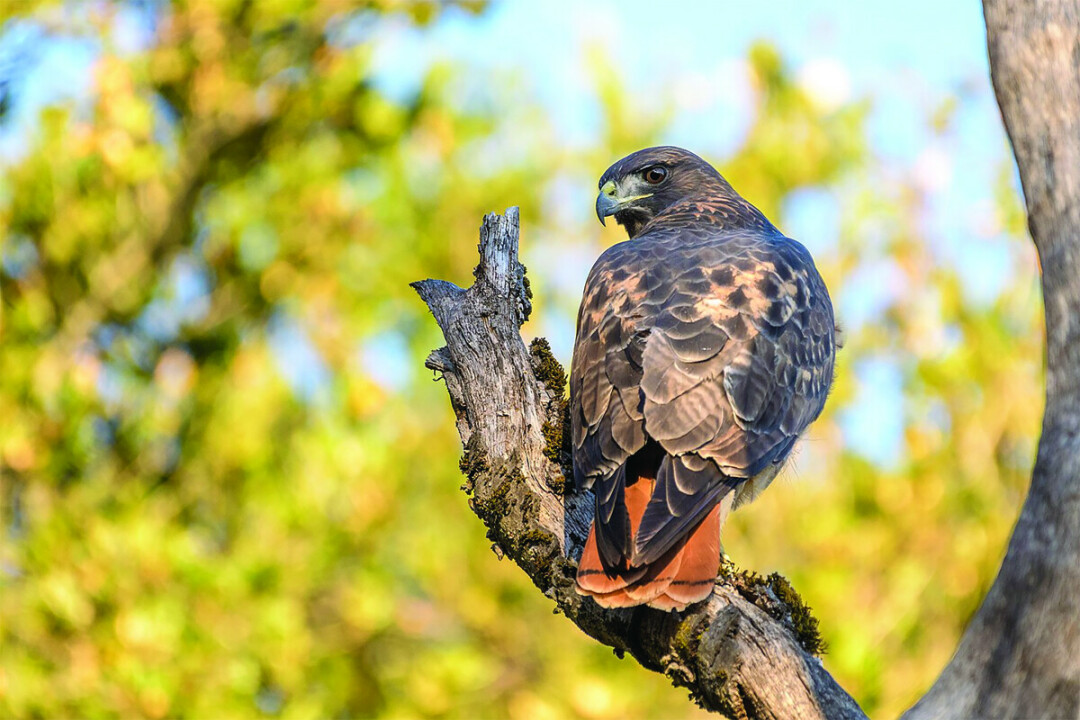Bozeman’s Spring Raptor Migration
Wednesday May. 1st, 2024

Spring is in the air, and with it comes the awe-inspiring spectacle of raptor migration across Montana.
Witness the majestic display of power and grace as eagles, hawks, falcons, and osprey take flight. The peak viewing window for spring raptor migration generally falls between late April and early May. Look for clear skies with northerly winds, as these conditions create an optimal lift for the soaring birds. Keep an eye out for species like Rough-legged Hawks, Ferruginous Hawks, Swainson’s Hawks, Osprey, Peregrine Falcons, Golden Eagles, and Bald Eagles. During spring migration, the Rocky Mountain Front from Glacier National Park to Yellowstone becomes a raptor superhighway, with thousands of raptors using the corridor to travel north to their breeding grounds, benefiting from the strong winds and thermals along the way.
Several locations across Montana offer prime spots for raptor watching:
• Roger’s Pass: Located near Lincoln, Montana, this area is renowned for its high numbers of migrating golden eagles.
• Bridger Mountains: Keep an eye out for a variety of raptors near Bozeman, Montana.
• Glacier National Park: Look to the skies as raptors navigate the breathtaking scenery of the park.
Tips for Raptor Watching
• Pack comfortable clothing and footwear: Be prepared for variable weather conditions in Montana’s mountains.
• Bring binoculars and a spotting scope to be able to get a closer look at these amazing birds.
• Download the Merlin bird identification app: this app can help you identify all the birds you might encounter.
• Practice patience and respect wildlife: Raptors are wild animals, so observe them from a distance, and avoid disturbing their natural behavior.
Witnessing the spring raptor migration in Montana is an unforgettable experience. So grab your binoculars, head outdoors, and be amazed by these remarkable birds of prey!
The Montana Raptor Conservation Center has been saving raptors in the Bozeman area since 1988. So far this year, the MRCC has rescued 14 raptors, with transport volunteers clocking over 1300 miles to assist. Comprehensive lead testing was introduced for all rehab raptors, a step up from previous protocols that only included eagles and symptomatic birds of prey. The prior testing structure indicated that 90% of eagle admissions showed elevated lead levels. Our expanded research has discovered lead presence in a Rough-legged Hawk, Cooper’s Hawk, and two Bald Eagles, findings that were unanticipated for the former two species. This broad testing hints at a larger scavenger bird population, and suggests that lead exposure is a more prevalent issue than typically assumed. Overwhelming scientific data has linked lead-based ammunition and tackle to continued lead ingestion in wildlife across the globe.
Of the 14 raptors rescued this year, a Rough-legged hawk and a Red-tailed hawk underwent surgical procedures due to humerus fractures. Thankfully, we were successful in stabilizing their fractures using pins. MRCC is also happy to report that there are currently no confirmed cases of Avian flu among raptors in Gallatin County.
If you find an injured raptor in the Bozeman area, call the Montana Raptor Conservation Center at 406-585-1211.
| Tweet |